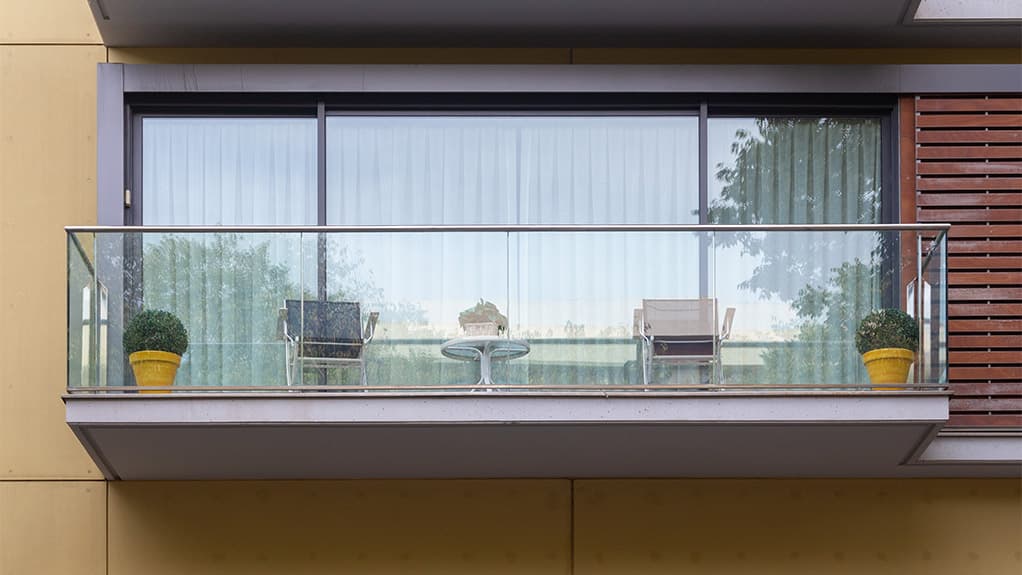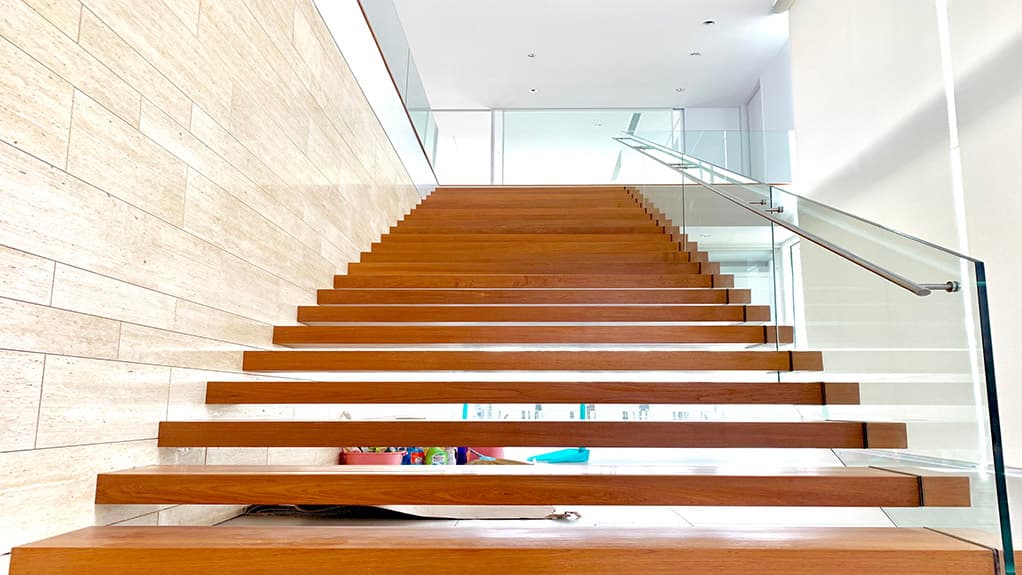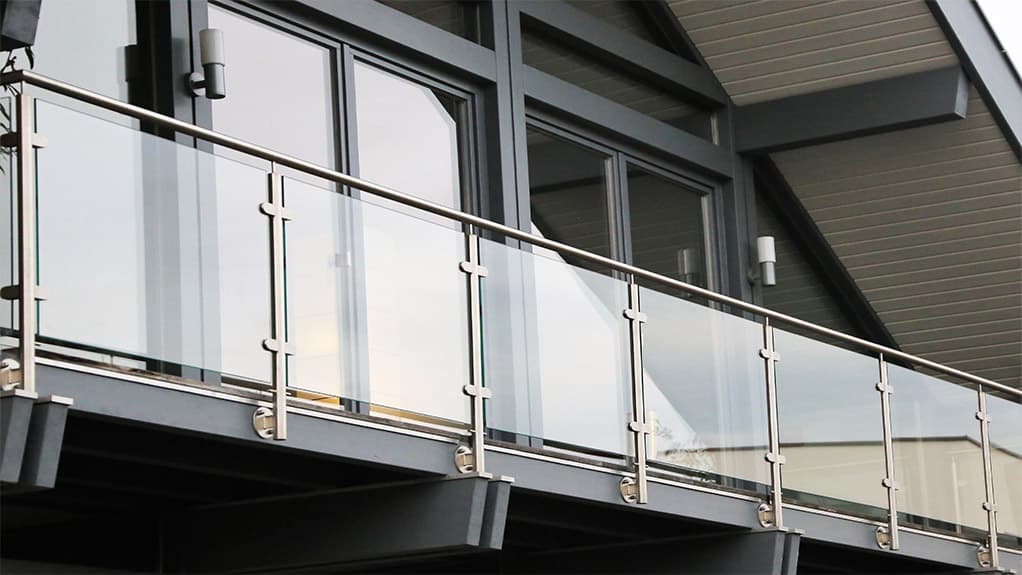What is a Balustrade?
A balustrade is a railing system typically comprised of posts and railings that is installed along the edges of stairs, decks, balconies, and other similar structures. It serves as a protective barrier to prevent people from accidentally falling off, while also lending aesthetic appeal to the space.
Table of Contents
Balustrades are available in a variety of materials, which can range from glass and metal to wood and stone. They can be custom designed to fit the space, and come in a range of styles. Whether used outside or inside, these types of railings offer both safety and style.
The terminology of the balustrade can be confusing, as it is often confused with the term “railing.” Although similar in many ways, there are key differences between the two. Railings are generally constructed from either metal, vinyl, or composite material, and are designed to provide more basic support and protection. Balustrades involve more ornamental details and decorative elements, making them the perfect choice for adding elegance and style to any space.
In addition to their aesthetic appeal, balustrades provide a level of safety that railings cannot. Because of their design, they are far more stable and structurally sound than railings, and able to withstand various weather conditions. This makes them the ideal choice for outdoor spaces. It’s important to remember that both railings and balustrades should meet building code requirements for safety and durability.
When deciding between a balustrade and a railing, it’s important to consider the purpose, budget, and aesthetics of the space. Both options offer a practical solution for safety and durability. However, when it comes to making a space look beautiful, a balustrade may be your best choice.

Definition of a Railing
A railing is a type of barrier made of metal, wood, plastic, or glass that is used as a safety feature around a balcony, porch, stairs, or other elevated structure. Typically, railings come in two parts: a top rail that runs along the top of the railing, and pickets or balusters that connect the top rail to the floor or stair. In some cases, these pickets or balusters may be replaced by a continuous panel of metal or glass.
Railings serve an important purpose in providing a sturdy barrier between people and potential hazards. They help prevent falls, and guard against accidental contact with hazardous objects. Railings also add aesthetic appeal to any structure, and can be used to define specific areas while still allowing for an unobstructed view.
The main difference between a railing and a balustrade is the presence of vertical pickets or other decorative elements. With a railing, these pickets are generally spaced farther apart than a balustrade, which has balusters that are placed closer together.
Comparison of the Structural Benefits and Aesthetics of Balustrade vs Railing
Balustrades and railings can be used to enhance the look of a building from the exterior, as well as adding structure and protection from falls. When making the decision between the two, there are a few key factors to consider.
The most notable difference between balustrades and railings is the visual aspect. Balustrades are typically more aesthetically pleasing and can add greater interest to a home or building with its ornamental detailing. Railings, on the other hand, are far more plain in their design; although they provide structure and safety, they don’t usually do much to improve the overall look of a building.
In terms of structural benefits, both balustrades and railings help protect against falls, especially in areas such as balconies, outdoor staircases, and terraces. However, balustrades may provide an extra layer of support, with their panels and vertical columns creating a sturdier structure than a standard railing can. This increased strength may also make them better for use in windy areas, since they can better withstand exterior pressure.
Ultimately, it is up to you to decide which option works best for your project; the choice may depend on the amount of internal and external design work you plan to do, as well as the structural benefits you need for your particular area. Both balustrades and railings have their advantages, so it is important to explore each option and determine which is best for your project.
Types of Balustrades
Balustrades are decorative architectural elements that provide support and safety along staircases, balconies, and porches. They come in a variety of shapes and styles, allowing for much creative freedom in designing the perfect balustrade for your home.
The most common type of balustrade is the classic wooden one. This traditional look consists of vertically placed handrails with evenly spaced spindles between them. Wooden balustrades are especially popular because they offer a timeless beauty and appeal.
In addition to wood, metal balustrades can also be used. These come in a variety of metals such as steel, copper, bronze, and aluminum. Metal balustrades look great in modern homes and can give your space an industrial feel. They are also extremely durable, making them ideal for outdoor settings.
Glass balustrades are a great way to bring in natural light and open up the view from your outdoor deck or balcony. They are often made from tempered glass panels, which are held together by metal supports. Glass balustrades are a stylish and modern choice, and they look stunning on any outdoor space.
Stone balustrades are a popular choice among homeowners due to their elegant look. Natural stones such as sandstone, granite, and slate provide a timeless high-end look to any outdoor space. Stone balustrades are also incredibly durable and suitable for any climate.
Finally, PVC balustrades are often used as a more affordable option than the other types of balustrades listed above. PVC balustrades are lightweight and easy to install, making them a great choice for any do-it-yourself project. They are often available in a wide range of colors and styles to suit any aesthetic.
No matter what type of balustrade you choose, it’s important to make sure that it meets building code requirements. Consult a professional before beginning your project to ensure you are installing it correctly and safely.

Types of Railings
Railings are a key feature of many homes or businesses and come in a wide variety of styles, materials, and sizes. Some railings are decorative accents that add character and visual interest, while others are simply functional safety measures. It’s important to note that railings also need to meet specific building code standards for safety and performance in order for them to be approved for installation.
When looking at types of railings, there are two main categories: horizontal and vertical. Horizontal railings, such as balusters, are typically used on stairs and balconies, and are made up of small posts and spindles that are connected by a top rail. Vertical railings, such as pickets or panels, are usually used along the edges of decks or other outdoor areas and are usually made up of a series of long pieces of wood, metal, or other material connected by top and bottom rails.
Within these two categories, there are a variety of popular railing styles, including:
- Contemporary – A sleek, modern look with straight lines created through the use of metal or glass.
- Traditional – Classic designs using wood or wrought iron elements.
- Decorative – An ornamental style featuring intricate patterns, carvings, and metals.
- Rustic – Incorporates natural materials such as logs and branches.
No matter what type of railing you choose, make sure it complies with local building codes and fits the overall aesthetic of your space. Not only will this ensure that the railing looks great, but more importantly, it will keep your family safe from potential hazards.
Materials Used for Balustrades and Railings
The material choice for balustrades and railings has a big impact on the look and feel of the final product. It is also important to consider long term durability when choosing the materials.
Balustrades and railings can be constructed from either metal, timber or glass, with each material having its own unique advantages and disadvantages.
Metal Balustrades and Railings
Metal balustrades and railings are strong, durable, and easy to maintain. This makes them ideal for high traffic areas because they can withstand wear and tear without requiring too much maintenance. Metal balustrades and railings can come in a variety of styles and finishes, offering plenty of options for customisation.
Timber Balustrades and Railings
Timber balustrades and railings offer a warm, natural look that can be matched to the existing décor of your home. They are ideal for creating a rustic, traditional aesthetic and have a certain charm that metal and glass cannot match. However, they do require more maintenance than metal or glass, as they are prone to warp and rot over time.
Glass Balustrades and Railings
Glass balustrades and railings are perfect if you’re looking for an elegant, modern look. They offer a sense of sophistication and stylishness, while still providing reliable safety and security. Glass balustrades and railings are strong and durable, but must be kept clean to maintain their appearance.
When it comes to choosing the right material for your balustrade or railing, it is important to look at the long-term durability and cost implications of each option. Consider the type of look you want to achieve, the amount of maintenance required, and any building code requirements in your area.
Building Code Requirements for Balustrades and Railings
When it comes to the building code, balustrades and railings are essential components of any structure. They provide safety, security, and stability to whatever they are installed on. This is why it’s important to make sure that your balustrade or railing meets the regulations set by local and state building codes.
The most important thing you need to keep in mind when installing a balustrade or railing is the height requirement. The railing needs to be a certain height to prevent people from falling off the edge of the structure. This height is determined by the building code for your area. For example, in the United States, the standard height for railings is typically 42” or taller.
In addition to the height requirement, the building code also regulates the materials used to construct balustrades and railings. The material used must be durable enough to withstand the wear and tear of everyday use. It also needs to be structurally sound and capable of supporting the weight it will be subjected to. Wood, metal, and composite materials are all commonly used in balustrades and railings.
Another component of the building code is the spacing between the balusters or spindles of the railing. The spacing should be close enough to prevent a person from being able to slip through the rails and fall off the structure. Generally, the distance between each baluster is 2-3 inches.
Balustrades and railings can also be subject to fire safety regulations. Certain areas require that the balustrade and/or railing be treated with a fire retardant or fireproofing material to prevent it from catching fire. If this is required by your local building code, make sure you comply with these regulations.
Railings and balustrades are essential features of any structure and they must be properly installed to ensure the safety of everyone who uses the structure. Keeping up to date with the local building codes and regulations for constructing balustrades and railings can help ensure that your structure is safe and secure.

Maintenance and Durability of Balustrade vs Railing
When considering the maintenance and durability of balustrades and railings, there are several key points to consider. Firstly, a balustrade will generally require some additional maintenance due to its intricate design. For example, gaps around the balusters can require regular cleaning. Additionally, the joints between the vertical balusters and the handrails will need to be re-sealed periodically.
In contrast, railings tend to require less regular maintenance since their components are simpler. However, railings made from materials that can corrode, such as iron or steel, may need to be treated with an appropriate protective coating. The material chosen for the railing can also have an effect on the maintenance it requires – wood or PVC can require extra time and effort to clean and preserve adequately.
In terms of durability, both balustrades and railings can be built from highly durable materials such as stainless steel and aluminum. However, balustrades must be built to meet the relevant building codes in order to provide the necessary level of safety, while railings usually only require a visual inspection to determine if they are suitable.
- Balustrades require more regular maintenance due to their complex design
- Railings often require less frequent maintenance but can still need treatment to prevent corrosion
- The materials chosen for either balustrades or railings can have an impact on their required maintenance
- Both balustrades and railings can be built from durable materials
- Balustrades must meet building code requirements, while railings usually only require a visual inspection
Cost Considerations
When choosing between a balustrade and railing for your property or building, cost can be a major factor. Generally, a railing is much less expensive than a balustrade due to the complexity of design and installation that a balustrade requires.
The cost of a railing is typically determined by the number of posts and panels you need and the type of material used. For example, a wrought iron railing can be more costly than a standard aluminum railing. The cost of a balustrade is determined by the type of material you choose plus extra costs for any handrails or other materials you want.
Material types will also play a factor in the cost, with some materials being significantly more expensive than others. For example, natural stone balustrades are much more expensive than those made from concrete or metal. Additionally, if you are looking to install a custom-made balustrade, this can add significant expense as it will require a professional to design and install.
It’s important to also consider installation costs when comparing the two types of structures. Railings tend to be very easy to install requiring simple tools and taking little time. Balustrades, on the other hand, require more expertise and materials such as wood, screws, and metal bars. Hiring a professional may be necessary.
Finally, consider ongoing maintenance costs. Both railings and balustrades should be maintained regularly to keep them looking good and functioning properly. Metal railings often require coatings to prevent rust, while wooden railings must be cleaned and treated regularly to prevent rotting, cracking, or discoloration.
Reasons to Consider a Balustrade Over a Railing
In terms of aesthetics, a balustrade offers a much more elegant and sophisticated look than a railing. Whether you’re looking for something minimalistic or something ornate, balustrades come in a variety of styles and designs to suit your needs. Additionally, balustrades can be custom designed to create unique looks or to fit the architectural style of your home.
Balustrades are also more secure than railings due to their structural design. A balustrade typically consists of vertical post supports, topped with a handrail, and connected with either metal bars or wood panels. This solid design gives balustrades much greater strength and stability than railings. Balustrades are also built to last, being more durable than railings which are usually less robust and prone to damage. Finally, the installation of a balustrade is usually a lot simpler and less labour intensive than that of a railing, so it’s a great choice for anyone looking to save time and money.
All in all, balustrades offer more aesthetic appeal and security than railings, making them a great choice for anyone considering a new balcony or stairway railing. They also require less labour for installation and are more durable, adding to their overall appeal. So if you’re looking for a stylish and sturdy solution, a balustrade is definitely worth considering.
Reasons to Consider a Railing Over a Balustrade
When it comes to designing and constructing a fence, porch or balcony, one of the main decisions to make is whether to install a balustrade or a railing. While both have their own benefits and drawbacks, there are certain cases in which you may want to opt for a railing over a balustrade. In this section, we’ll look at some of the reasons why railings may be a better choice.
Price
Generally speaking, railings tend to be more affordable than balustrades. This is because they are typically made from simpler materials such as wood or metal and don’t require as much labor for installation. If you’re on a tight budget, railings might be the way to go.
Safety
Railings are designed to provide a barrier between people and the edge of a balcony, porch, or other structure. The slats that make up a railing are spaced closely together, making it nearly impossible for someone to get through them. Balustrades, on the other hand, have wider gaps between the bars that can potentially be climbed over, posing a greater risk to safety.
Maintenance
Railings are generally easier to maintain than balustrades. This is because the materials used to make them are less prone to rust or decay over time. Just make sure to repaint or restain your railing as needed, and you’ll be good to go. On the other hand, balustrades must be sanded and refinished every few years to prevent damage.
Durability
When it comes to durability, railings have an advantage over balustrades. They are typically made of tougher materials that are better able to stand up to the elements and wear-and-tear. Plus, railings are usually stronger and more resistant to damage in the event of an accident or natural disaster.
Conclusion
Choosing between a balustrade and railing often comes down to personal preference. Balustrades are more decorative and provide additional safety features than a railing, while railings tend to be lower maintenance and less expensive. It is important to research your local building codes and the materials available, to determine which option would work best in your space. Ultimately, both balustrades and railings can be an attractive way to enhance your outdoor space.
If you are looking for more flexibility and beauty, then a balustrade may be the ideal solution. They require more maintenance and upkeep but can give any home exterior a unique look. However, if cost and convenience is a concern, a railing may be a more suitable choice. Railings can still provide a level of decoration and style, just at a lower cost and with less maintenance.
No matter what option you choose for your space, it is important to ensure that your balustrade or railing is installed upholds local building codes. Quality materials, proper installation, and regular maintenance can ensure that your outdoor space remains safe and beautiful for years to come.
FAQs about Balustrades vs Railings
1. Q: What is the difference between a balustrade and a railing?
A: A balustrade is a feature that was traditionally made from stone, metal, or other masonry material columns or pillars and a handrail on top. It can be meant for decoration or for protection. A railing is a structure comprised of posts or columns secured to the wall or floor in which there is an additional top rail, or center rail.
2. Q: What are the structural benefits and aesthetics of a balustrade vs railing?
A: Balustrades provide both a decorative and protective feature to an area. They can become the focus of any design, be it traditional or modern in style. Railings primarily serve the purpose of providing security and preventing people from falling off a balcony or stairs.
3. Q: What types of balustrades and railings are available?
A: Common types of balustrades include traditional column caps, glass panels, stainless steel posts, or rope-style balustrades. Common types of railings include wood balusters, wrought iron, aluminum, stainless steel, vinyl railings, cable railings, or composite railings.
4. Q: What materials are used for balustrades and railings?
A: Materials used for balustrades can include steel, aluminum, stone, wood, glass, and rope or synthetic rope. Railings can be composed of wrought iron, wood, aluminum, PVC, stainless steel, and composite materials.
5. Q: Are there any building code requirements for balustrades and railings?
A: Yes, there are building codes in place for both balustrades and railings, with different recommendations for residential and commercial buildings. Checking with local authorities or a construction applicable specialist is recommended to ensure code compliance.
6. Q: How durable are balustrades and railings?
A: The durability of a balustrade or railing is dependent on the quality of workmanship, materials used, and maintenance. Balustrades and railings made of steel, aluminum, and stone are the most durable, and require the least amount of maintenance, while wood and ropes may need more upkeep.
7. Q: What is the cost of balustrades or railings?
A: The cost of balustrades and railings can vary greatly depending on the type, material, size, complexity, and the installation method. Generally, custom-made stone balustrades are higher in cost than aluminum railings, but these costs are highly variable.
